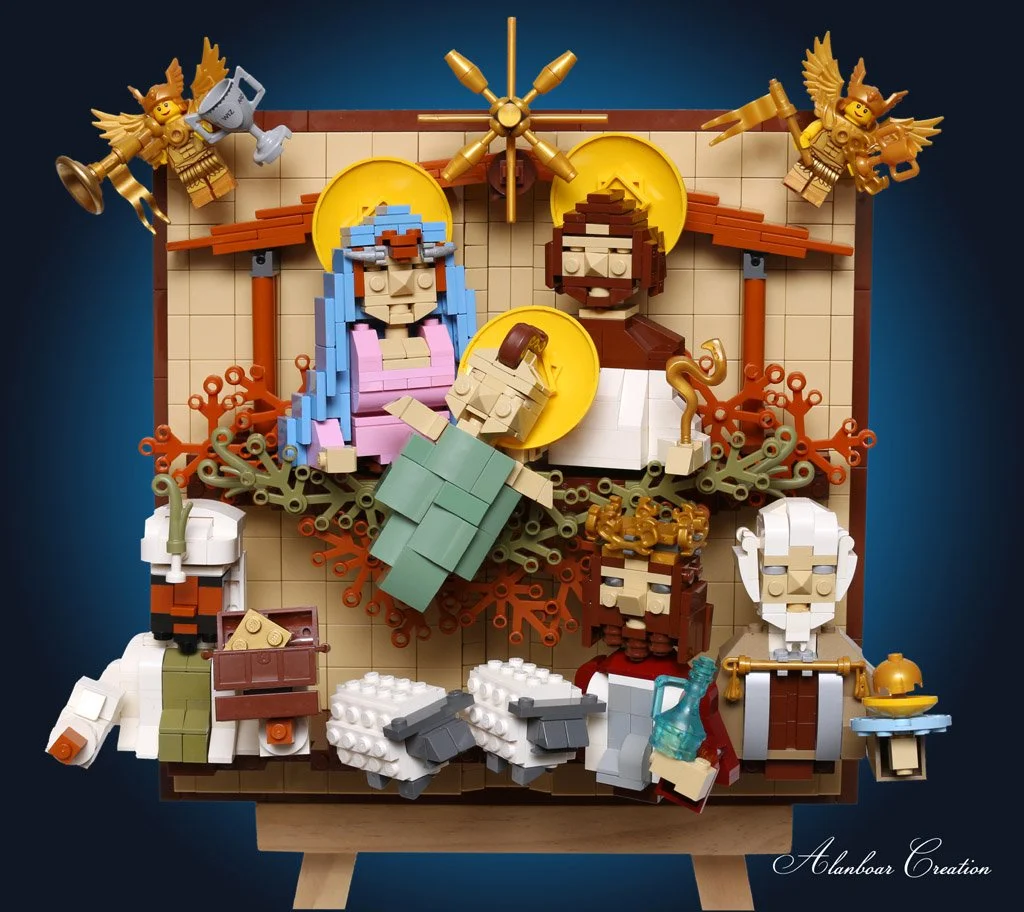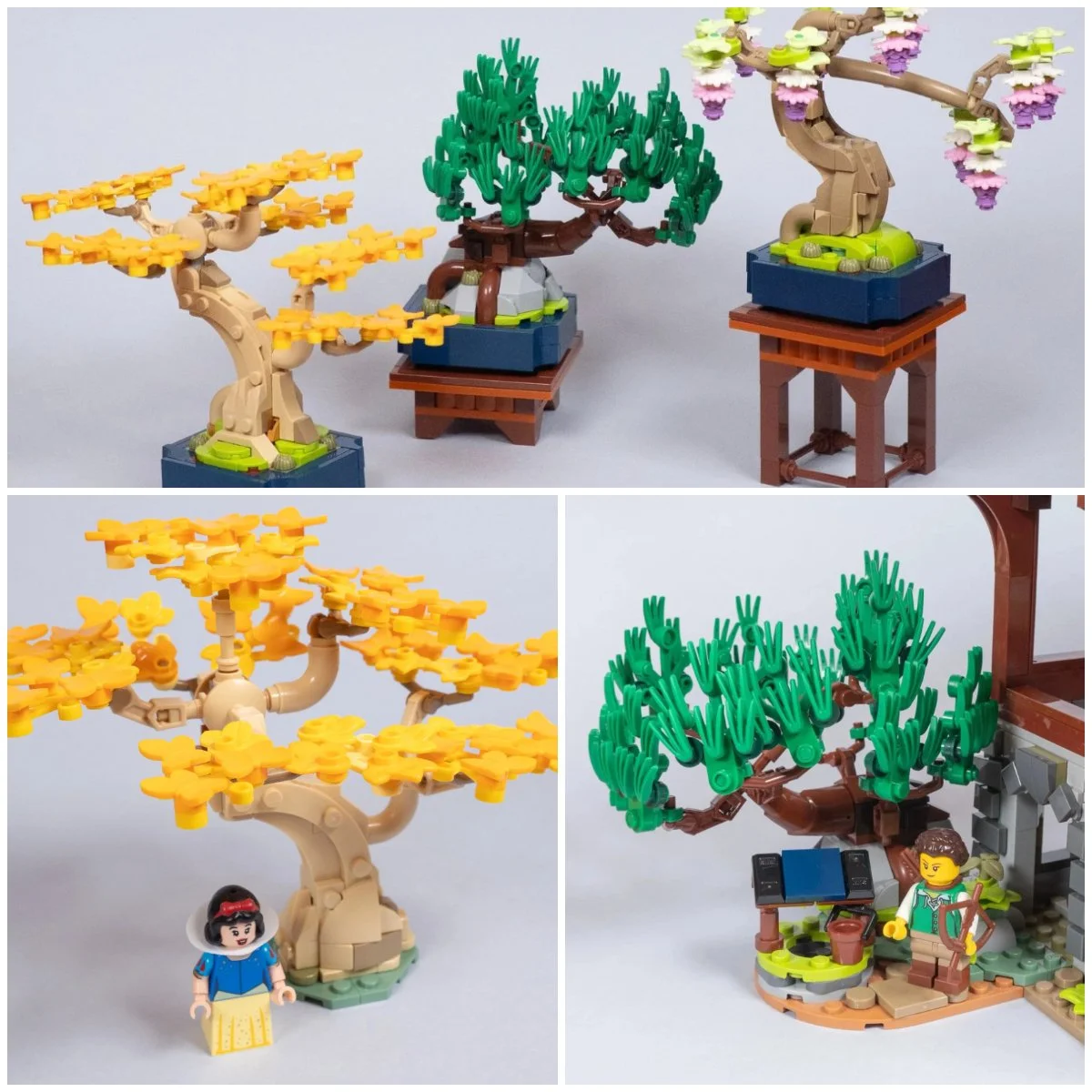Creative Artistry: An Interview with Cheung Hin Lun, aka Alanboar
/Here at BrickNerd, we enjoy showcasing the work of spectacular creators in the LEGO community and the masterpieces they create that transport us to new worlds. It is with great pleasure that today we’ll be speaking with Cheung Hin Lun (alanboar), an amazing artist from Hong Kong.
Ann: Hello, Cheung Hin Lun! It's great to interview such a talented and creative LEGO artist as yourself! Please, tell us a bit about yourself and your love of LEGO.
Alanboar: Hi, I am Alanboar, a LEGO fan and brick artist from Hong Kong. I have loved playing with LEGO since I was a child. I remember my mom gave me my first set: 6380. But I didn’t play with LEGO much growing up. Until one day my girlfriend (now my wife - Fion) gifted me a Creator house and my interest in playing with LEGO was rekindled. I once worked in graphic design, and with experience in various kinds of model building, I started on the path of creating with LEGO bricks.
Ann: Without a doubt, one of the most common themes presented in your art is the Charm of the East. How are your love of the culture and travel experiences reflected in your LEGO creations?
Alanboar: I love traveling and Japanese culture. While traveling, I often observe and discover details or learn about cultures that can serve as inspiration for future works. For example, I made a pop-up painting that felt like a stroll in Kyoto - reminiscent of my honeymoon trip.
I visited the Kinkaku-ji, and the glittering golden architecture was mesmerizing so I tried to make my own version. I also discovered some elegant Japanese scroll paintings during my trip, and had an idea to make a LEGO version featuring Mount Fuji and the Tokyo five-storied pagoda.
Ann: You often recreate historical and modern buildings from Hong Kong. What a wonderful way to invite the spectators to the streets of your native city!
Alanboar: Yes, I have made many local Hong Kong models, large and small. I participated in the publication of “Building Hong Kong” and created some key landmarks including Wo Cheong Pawn, Ocean Park, and Lai Yuen.



I’ve also made some larger historical models for exhibitions, including Tai O, Taikoo Ropeway, and State Theatre. I often spend a lot of time collecting information and adding scenes or details into my work so spectators can immerse themselves in the exhibition.
Ann: Your LEGO models of famous paintings look so impressive! Please, tell us about your approach to designing each painting that lets you achieve such a high level of similarity to the original.
Alanboar: LEGO is a perfect medium for artistic expression. With that said, it’s also difficult to recreate famous paintings in an accurate size with bricks. I usually start by observing the original work and then try to recreate it using appropriate techniques.
“The Great Wave off Kanagawa” is a woodblock print. I thought about different interpretations and finally chose the “stud on side” technique. This mosaic technique makes the work look more detailed and closer to its original material.
“The Girl with a Pearl Earring” is a tronie (a portrait of an exaggerated character) that I love so much that I reproduced it twice. The first version is the “error diffusion” mosaic. The latest version comes in the form of a pop-up painting. To make it more realistic, I paid close attention to the details of the girl in the painting, such as the reflection in the eyeballs and the shape of her cheeks.
Ann: “Napoleon Crossing the Alps” is one of your most technically interesting mosaics. What was some of the design process like behind the build?
Alanboar: I used the “error diffusion” dithering technique to create this painting. This is a cost-effective technique for mosaics to simulate realistically. It helps designers to pick cheaper bricks/plates (by color) to simulate the painted areas. It has a high degree of realism, but the disadvantage is that it requires a certain distance to view.
The most interesting thing about the process was that I could interact with my son Kahim. The work is designed in the form of modules so that I can give my son a small piece to try and help build it. Of course, my son is very young and can’t build according to the instructions. That doesn’t matter. It’s just a fun parent-child activity.
Ann: I noticed you like to build artistic representations of holidays, traditional festivals and sports events.
Alanboar: I love creating wedding scenes with LEGO flowers and stunning colors for my wedding decorations. To celebrate Christmas, I created “The Birth of Jesus” using some special LEGO parts to represent the angels, Jesus’s hair, and the bottle of frankincense as an attraction. Or I use the public swimming pool as the background to create a scene of swimming activities, allowing the spectators to look for their living interesting details.




Ann: Your LEGO monuments do a good job of reflecting the national identity of different countries. You are a big fan of traveling, aren't you?
Alanboar: Yes, I really enjoy traveling, especially traveling to Japan. I always create works about Japan, as mentioned above. In addition, I have created some works that highlight local tourism, like Tai O, Ngong Ping Buddha, and the more interesting Shaolin Temple in China.



Ann: It's great to see how your love of nature has materialized in your brick-built animals.
Alanboar: One build is of my pet “Po.“ He accompanied me growing up, but he passed away long ago. I missed my beloved cockatoo and how cute he looked eating tangerines, so I thought of making him in brick form. Remembering that his crest could be spiked up or slicked back, I tried using some brick separators to recreate it.
Another animal I built is a butterfly. Once, I saw a movie with my family in a planetarium theater about the naturalist Henry Walter Bates. I had the idea to build LEGO butterflies to honor Henry’s tremendous efforts. It’s a creation that I can use to explain “Mimicry” (‘Batesian mimicry’ is a form of mimicry where a harmless species has evolved to imitate the warning signals of a harmful species directed at a predator of them both) at future events and exhibitions.
Ann: What a touching and inspiring communication through your art. Your animals look very fun and realistic when you shoot them outdoors.
Ann: I love the bright atmospheres in your pop-culture creations, like The LEGO Movie. What cinema genres inspire you the most, and what cinematic scene would you like to build next?
Alanboar: Yes, I’ve created several displays for The LEGO Movie—they are designed and intended for local competition events. I have entered the contest three times for The LEGO Movie, he LEGO Movie II and THe LEGO Batman Movie.
I also achieved very good results in these competitions, which inspired me to try to understand medium-sized works in which themes can be highlighted with artistic details, such as colors, space, composition arrangement, or special points of attraction.
I don’t have a specific theme for my next work, but I always like to create my favorite movie scenes or cartoon sculptures, like Mickey, Mario, and Pikachu, because I feel happy when I see kids enjoying looking at them.
Ann: Talking about artistic details, what inspired you to create your crystal sculptures?
Alanboar: I was inspired by “Cinderella,” so I made an iconic ”Glass Slipper” version, which I think looks really cool.
I then reused transparent bricks and plates to create the glass “Swan.” I found it sparkles nicely and is perfect for exhibitions if I put some LED light strips inside of it. However, I realized that transparent creations are not easy to build because the transparent parts are limited to mostly 1x2 or 1x1 bricks and plates.
Ann: Speaking of display, your works have been featured in public and personal exhibitions. What are you most proud of as a LEGO builder?
Alanboar: I once tried to create a large-scale classical model, “State Theater,” with friends at the invitation of a conservation group. Although much cost and effort were spent, there was no profit return. However, the model was put on public display to draw public attention to theater conservation issues. We think this is very meaningful.
I have been creating works for many years. I feel that the success of creations lies not in the work itself but in the interaction with family, spectators, and things through the creations. The creation can be my own, or it can be shared, with comments, memories, or some inspiration or feedback, where I can meet new and old friends and see how happy the children are. This is the motivation for my creation path and pride of being a LEGO builder.
Ann: That is lovely. Do you have a favorite building project?
Alanboar: It must be “Japanese Culture ~ Kyoto Kiyomizu,” a pop-up LEGO painting reminiscing about my honeymoon trip with my wife. It was a rainy day in Kyoto and the cherry blossoms were in full bloom, so we walked around Kiyomizu Dera Temple while trying on kimonos. This work reflects the situation at that time, with a little fantasy on my part, so that the spectators can experience my emotions and joy at that time.
Ann: Do you have any hobbies and interests outside of LEGO?
Alanboar: Of course I am a travel fan, but I am also a history buff, a “Dragon Quest” fan and a retro game collector. I love collecting Famicom, Super Famicom, SegaDrive and PC Engine games. So just for fun, I once built a DQ slime and Famicon console in LEGO form.
Ann: Thank you so much for this wonderful interview! It was so interesting getting to know more about your creativity. I wish you much inspiration for whatever creation comes next!
You can explore more of Alanboar’s LEGO creations on Flickr.
What inspires you to build LEGO creations? Let us know in the comments below.
Do you want to help BrickNerd continue publishing articles like this one? Become a top patron like Charlie Stephens, Marc & Liz Puleo, Paige Mueller, Rob Klingberg from Brickstuff, John & Joshua Hanlon from Beyond the Brick, Megan Lum, Andy Price, Lukas Kurth from StoneWars, Wayne Tyler, Monica Innis, Dan Church, and Roxanne Baxter to show your support, get early access, exclusive swag and more.
















































